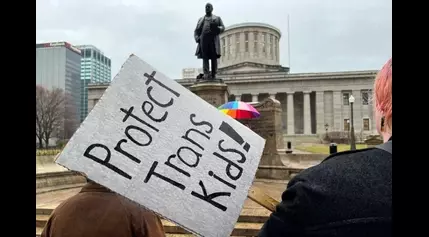Enrolling kids in college isn’t enough
Massachusetts' universally free community college program has succeeded in one important goal: it boosted the schools' enrollment. However, the next challenge education officials and colleges must address is keeping students in school until graduation, where the latest data is far less encouraging.
Empowering Students, Transforming Lives
Enrollment Surge: A Promising Start
Following years of declines, the number of students at community colleges grew by 8.7 percent in 2023, the first year of free college for students over age 25, followed by an expected 14 percent growth this fall, according to preliminary data released by the Department of Higher Education on Tuesday. Overall, enrollment in public higher education was expected to increase by 6.5 percent this year, reversing years of declines, with essentially flat enrollment at the University of Massachusetts and a 1.2 percent increase at other state universities. This surge in enrollment suggests that the free community college program has successfully removed financial barriers and opened the doors of higher education to a wider range of students.Completion Rates: The Persistent Challenge
However, the data also reveals a concerning trend in completion rates. Only 55.1 percent of students who enter Massachusetts public higher education will complete a degree or certificate anywhere in the United States within six years, according to the Department of Higher Education. At community colleges, only 34 percent of students who entered in 2017 completed a degree or certificate by 2023, a number that has remained constant for six years. State universities (excluding UMass) have seen a downward trend over several years in the number of students who are accumulating credits on time, persisting from one year to the next, and completing a degree. For the class entering in 2017, 69 percent earned a degree or certificate within six years, down from 72.9 percent five years earlier. UMass performs best on these metrics, with 77.4 percent of students earning a degree within six years.Addressing Racial and Socioeconomic Disparities
The data also identifies persistent racial disparities, with fewer Black and Hispanic students completing degrees compared to white students across public higher education. Lower-income students — those eligible for federal Pell grants — also have lower completion rates than higher-income students. These findings underscore the need for targeted interventions to support underrepresented and disadvantaged populations in achieving academic success.The Importance of Completion
Completion is crucial because someone who earns a degree or certificate is more likely to find a job and earn higher wages. A report by The Boston Foundation, MassINC, and the Dukakis Center for Urban and Regional Policy found that community college offers a path to economic mobility, with the biggest benefits for those who earn a degree. Therefore, addressing the completion challenge is not only a matter of academic achievement but also a crucial step towards economic empowerment and social mobility.Strategies for Improving Retention
To address the retention challenge, education officials and colleges must focus on two key areas: ensuring students can afford their education and providing wraparound support services. The state has already invested in affordability by making community college free and increasing financial aid for low- and middle-income students at state universities. However, there may be more that can be done to increase aid eligibility for middle-income students or offer bigger stipends for needs like child care and transportation.Equally important is a focus on support services. The state's Advisory Council for the Advancement of Representation in Education suggests using financial aid to incentivize full-time attendance and increasing the availability of need-based rather than merit-based aid. The council also calls for the provision of evidence-based services like individualized advising and coaching, mental health care, emergency financial aid, and help with issues like housing and food insecurity.Promising Initiatives and Lessons from Other States
Some promising initiatives are already underway in Massachusetts. The Legislature created a grant program in 2021 to support students who are economically disadvantaged, first generation, minorities, have disabilities, or are LGBTQ. Early outcomes are promising, with 63 percent of the program's participants in 2022 persisting from one year to the next compared to 53 percent of their peers.Additionally, the current state budget includes million to offer similar grants at four-year state universities for the first time. Campuses are exploring ideas for using this funding, including implementing early warning systems, hiring academic coaches, offering emergency financial assistance, and training faculty on supporting first-generation students.Massachusetts can also learn from successful programs in other states, such as the ASAP program in New York City, which provides students with three years of financial and intensive academic support at community colleges. After three years, 40 percent of ASAP participants earned an associate's degree, compared to 22 percent of comparable nonparticipants. After eight years, 52 percent of ASAP participants earned an associate's degree compared to nearly 40 percent of their peers.Similarly, three Ohio community colleges that adopted programs modeled after ASAP reported 50 percent increases in graduation rates, higher rates of bachelor's degree attainment, and increased earnings after college. These examples demonstrate the potential for targeted, evidence-based interventions to significantly improve student retention and completion.




















